Ricard Delgado-Gonzalo
Generative Pre-Trained Transformer for Cardiac Abnormality Detection
Oct 07, 2021
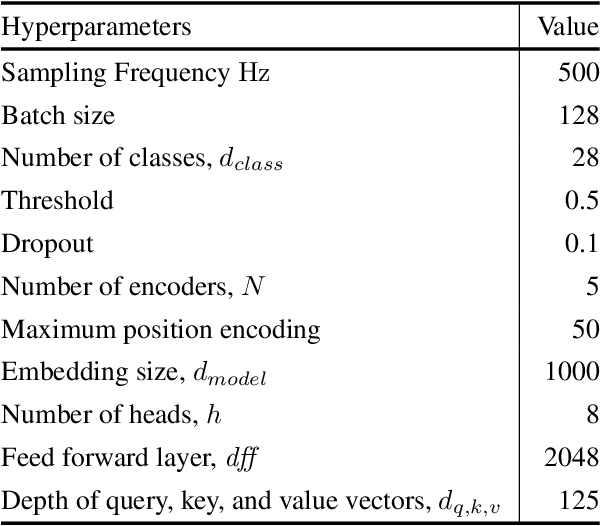
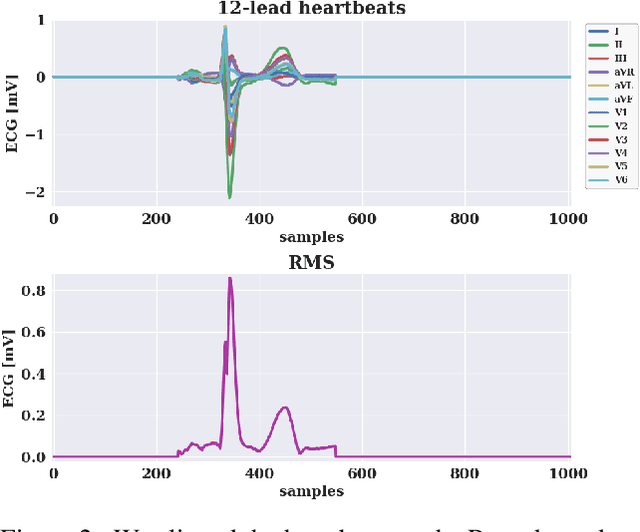

Abstract:ECG heartbeat classification plays a vital role in diagnosis of cardiac arrhythmia. The goal of the Physionet/CinC 2021 challenge was to accurately classify clinical diagnosis based on 12, 6, 4, 3 or 2-lead ECG recordings in order to aid doctors in the diagnoses of different heart conditions. Transformers have had great success in the field of natural language processing in the past years. Our team, CinCSEM, proposes to draw the parallel between text and periodic time series signals by viewing the repeated period as words and the whole signal as a sequence of such words. In this way, the attention mechanisms of the transformers can be applied to periodic time series signals. In our implementation, we follow the Transformer Encoder architecture, which combines several encoder layers followed by a dense layer with linear or sigmoid activation for generative pre-training or classification, respectively. The use case presented here is multi-label classification of heartbeat abnormalities of ECG recordings shared by the challenge. Our best entry, not exceeding the challenge's hardware limitations, achieved a score of 0.12, 0.07, 0.10, 0.10 and 0.07 on 12-lead, 6-lead, 4-lead, 3-lead and 2-lead test set respectively. Unfortunately, our team was unable to be ranked because of a missing pre-print.
Cardiac Arrhythmia Detection from ECG with Convolutional Recurrent Neural Networks
Oct 07, 2020



Abstract:Except for a few specific types, cardiac arrhythmias are not immediately life-threatening. However, if not treated appropriately, they can cause serious complications. In particular, atrial fibrillation, which is characterized by fast and irregular heart beats, increases the risk of stroke. We propose three neural network architectures to detect abnormal rhythms from single-lead ECG signals. These architectures combine convolutional layers to extract high-level features pertinent for arrhythmia detection from sliding windows and recurrent layers to aggregate these features over signals of varying durations. We applied the neural networks to the dataset used for the challenge of Computing in Cardiology 2017 and a dataset built by joining three databases available on PhysioNet. Our architectures achieved an accuracy of 86.23% on the first dataset, similar to the winning entries of the challenge, and an accuracy of 92.02% on the second dataset.
* 18 pages, Published in BIOSTEC 2019
ECG Classification with a Convolutional Recurrent Neural Network
Oct 06, 2020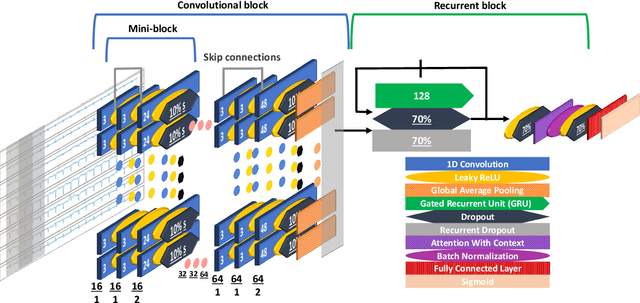
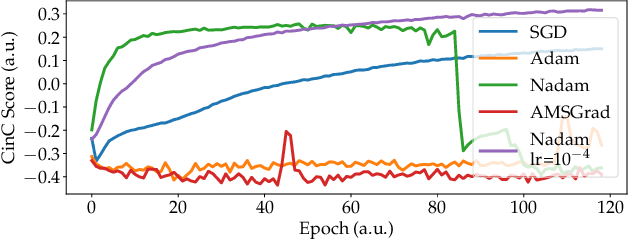
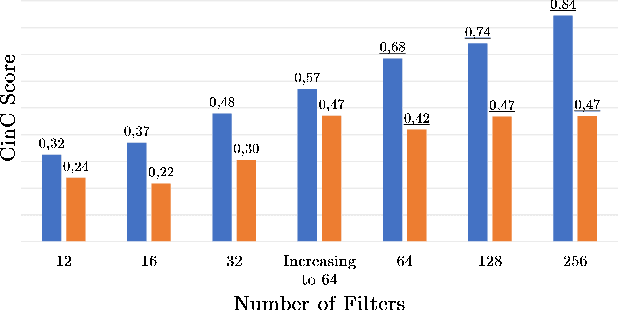
Abstract:We developed a convolutional recurrent neural network to classify 12-lead ECG signals for the challenge of PhysioNet/ Computing in Cardiology 2020 as team Pink Irish Hat. The model combines convolutional and recurrent layers, takes sliding windows of ECG signals as input and yields the probability of each class as output. The convolutional part extracts features from each sliding window. The bi-directional gated recurrent unit (GRU) layer and an attention layer aggregate these features from all windows into a single feature vector. Finally, a dense layer outputs class probabilities. The final decision is made using test time augmentation (TTA) and an optimized decision threshold. Several hyperparameters of our architecture were optimized, the most important of which turned out to be the choice of optimizer and the number of filters per convolutional layer. Our network achieved a challenge score of 0.511 on the hidden validation set and 0.167 on the full hidden test set, ranking us 23rd out of 41 in the official ranking.
Convolutional-Recurrent Neural Networks on Low-Power Wearable Platforms for Cardiac Arrhythmia Detection
Jan 08, 2020



Abstract:Low-power sensing technologies, such as wearables, have emerged in the healthcare domain since they enable continuous and non-invasive monitoring of physiological signals. In order to endow such devices with clinical value, classical signal processing has encountered numerous challenges. However, data-driven methods, such as machine learning, offer attractive accuracies at the expense of being resource and memory demanding. In this paper, we focus on the inference of neural networks running in microcontrollers and low-power processors which wearable sensors and devices are generally equipped with. In particular, we adapted an existing convolutional-recurrent neural network, designed to detect and classify cardiac arrhythmias from a single-lead electrocardiogram, to the low-power embedded System-on-Chip nRF52 from Nordic Semiconductor with an ARM's Cortex-M4 processing core. We show our implementation in fixed-point precision, using the CMSIS-NN libraries, yields a drop of $F_1$ score from 0.8 to 0.784, from the original implementation, with a memory footprint of 195.6KB, and a throughput of 33.98MOps/s.
Classification of Cardiac Arrhythmias from Single Lead ECG with a Convolutional Recurrent Neural Network
Jun 25, 2019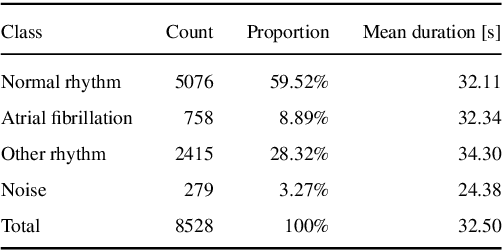
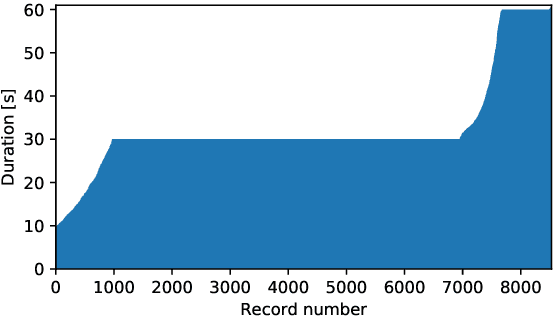
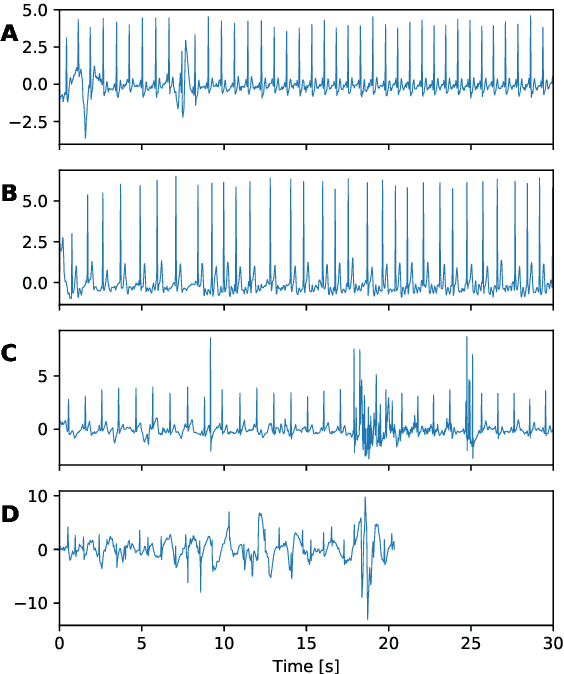
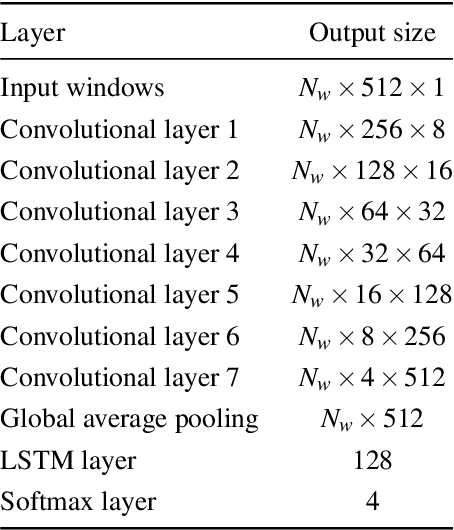
Abstract:While most heart arrhythmias are not immediately harmful, they can lead to severe complications. In particular, atrial fibrillation, the most common arrhythmia, is characterized by fast and irregular heart beats and increases the risk of suffering a stroke. To detect such abnormal heart conditions, we propose a system composed of two main parts: a smart vest with two cooperative sensors to collect ECG data and a neural network architecture to classify heart rhythms. The smart vest uses two dry bi-electrodes to record a single lead ECG signal. The biopotential signal is then streamed via a gateway to the cloud where a neural network detects and classifies the heart arrhythmias. We selected an architecture that combines convolutional and recurrent layers. The convolutional layers extract relevant features from sliding windows of ECG and the recurrent layer aggregates them for a final softmax layer that performs the classification. Our neural network achieves an accuracy of 87.50% on the dataset of the challenge of Computing in Cardiology 2017.
* Nominated to best paper award
Embedded Deep Learning for Sleep Staging
Jun 18, 2019


Abstract:The rapidly-advancing technology of deep learning (DL) into the world of the Internet of Things (IoT) has not fully entered in the fields of m-Health yet. Among the main reasons are the high computational demands of DL algorithms and the inherent resource-limitation of wearable devices. In this paper, we present initial results for two deep learning architectures used to diagnose and analyze sleep patterns, and we compare them with a previously presented hand-crafted algorithm. The algorithms are designed to be reliable for consumer healthcare applications and to be integrated into low-power wearables with limited computational resources.
 Add to Chrome
Add to Chrome Add to Firefox
Add to Firefox Add to Edge
Add to Edge